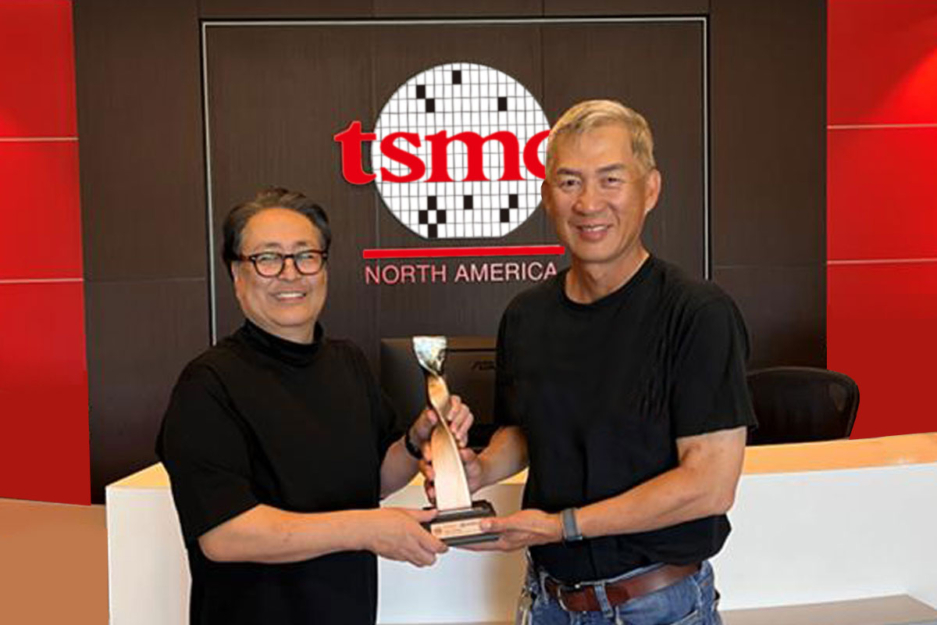5 Essential Elements For apollo4 plus
5 Essential Elements For apollo4 plus
Blog Article

Around the climb to orbit, Just about every of your Saturn V's a few stages burned for a little bit lengthier than predicted. This left the craft in an orbit roughly 1 kilometer higher than anticipated, some thing perfectly in just tolerance. A burn off eleven seconds extended than planned meant the CM entered the Earth's ambiance a little a lot quicker and at a shallower angle than planned, but still inside tolerance. This discrepancy took place not as a result of overall performance of the advice system (which was exemplary), but since the melt away had been controlled from Earth. The CM's environmental Command process held the ship's cabin in just suitable temperatures and pressures through the mission, rising by only five.6 °C (10 °F) for the duration of atmospheric entry.[fifty eight][59]
If additional memory is necessary, an exterior memory is supported by way of Ambiq’s multi-bit SPI and eMMC interfaces.
Apollo 4 within the launch pad Apollo 4 was the initial flight of the Saturn V. At some time, it had been the largest launch car to at any time try a flight.[34] This mission was the first time NASA employed "all-up" screening, necessitating that every stage from the launch automobile perform and the vehicle carry a Doing the job spacecraft; a call that goes back to late 1963.[35] Mueller, the head on the NASA Office of Manned House Flight At the moment, was a techniques engineer who Formerly labored on military missile initiatives. He had acknowledged that every one-up testing was correctly accustomed to swiftly establish the Air Power's Minuteman ICBM application, and considered it could be utilized to meet Apollo's agenda.[36] In a very 1963 memo he purchased that equally the initial Saturn IB flight and the first Saturn V flight be uncrewed, that each phase be absolutely functional, and that every have a Operating spacecraft.
Because the Soviet Union had increased carry ability launch vehicles, Kennedy chose, from among alternatives presented by NASA, a challenge beyond the potential of the present era of rocketry, so which the US and Soviet Union would be ranging from a situation of equality. A crewed mission for the Moon would serve this intent.[24]
[143] Despite some complex and temperature issues, black and white pictures of the 1st lunar EVA had been received and broadcast to not less than 600 million people on the planet.[143] Copies of this video in broadcast format were saved and they are broadly readily available, but recordings of the first sluggish scan resource transmission with the lunar surface were being very likely destroyed in the course of schedule magnetic tape re-use at NASA.[142]
The new edition of Intento Language Hub using a freshly developed GenAI Portal will aid the integration of numerous generative AI products with machine translation in multilingual workflows throughout several program devices employed by purchasers.
The technological innovation is used in the Apollo family of microcontrollers which has resulted in chips that may operate down to 30uA/MHz in Energetic mode and 100nA in standby.
Smart households may be monitored and managed by way of various devices and technologies including voice-activated assistants, cell applications, and clever household hubs. Such as, thermostats be controlled remotely to adjust the temperature in the home, though appliances like clever fridges or washing equipment is often instructed to run at more Electrical power-productive occasions.
However it wasn’t lengthy right before this approach fell out of favour. With spacecraft 014, the spacecraft for Apollo two, slipping terribly driving, lots of commenced questioning the worth of traveling a next Block I mission. There wasn’t excessive the company could master from the Block I flight that it could then use into the Moon-certain Block II missions. Other than, NASA experienced prolonged abandoned the exercise of duplicating missions; not given that Gus Grissom followed in Al Shepard’s suborbital contrails in 1961 had NASA duplicated a mission.
About 38 seconds just after the next stage ignition the Saturn V switched from the preprogrammed trajectory into a "closed loop" or Iterative Assistance Mode. The instrument device now computed in genuine time the most gasoline-successful trajectory toward its goal orbit.
During the mission, the trigger was diagnosed because the rendezvous radar change currently being in the wrong situation, creating the computer to course of action info from both equally the rendezvous and landing radars at the same time.[121][122] Application engineer Don Eyles concluded within a 2005 Guidance and Regulate Meeting paper that the problem was due to a components design bug Formerly viewed during tests of the very first uncrewed LM in Apollo five. Obtaining the rendezvous radar on (so it absolutely was warmed up in the event of an emergency landing abort) should have been irrelevant to the pc, but an electrical phasing mismatch between two portions of the rendezvous radar system could induce the stationary antenna to look to the pc as dithering backwards and forwards involving two positions, based on how the hardware randomly driven up.
When the rocket experienced lifted off, it couldn't safely settle back down on to the pad If your engines failed. The astronauts regarded this among the tensest moments in riding the Saturn V, for When the rocket did fall short to carry off immediately after release that they had a very low chance of survival offered the big amounts of propellant. To improve security, the Saturn Emergency Detection System (EDS) inhibited motor shutdown for the main 30 seconds of flight.
Aldrin looked up in time to witness the flag topple: "The ascent stage in the LM divided ... I was concentrating around the desktops, and Neil was studying the attitude indicator, but I looked up extensive more than enough to begin to see the flag tumble around."[170] Subsequent Apollo missions planted their flags farther in the LM.[171] Columbia in lunar orbit
1 is poised that can help propel the immediate adoption of distant affected person or therapeutic monitoring, supplying an encouraging prognosis for users and healthcare suppliers. Apollo4 Blue Lite Datasheet
 Get Smart. Use Less Energy.
Get Smart. Use Less Energy.
Ultra-low power SoCs for IoT endpoint devices
that demand complex operations
and longer battery life.
✍ Ambiq® is committed to further improve the quality of life by enabling the intelligence of endpoints while further reducing carbon footprints. Ambiq – your partner in endpoint intelligence.
✯✯✯Based in Austin, San Jose, Hsinchu, Shenzhen, and Shanghai, our leadership and management teams consist of advocates, builders, enthusiasts, entrepreneurs, explorers, incubators, inventors, pioneers, protectors, thinkers, and visionaries. With a diverse spectrum of experiences and skillset, we came together and united with one goal to enable the true Internet of Things where the battery-powered endpoint devices can truly be connected intuitively and intelligently 24/7.
Ambiq Wins the Demo of the Year Award at 2023 TSMC Technology SymposiumSeptember 7, 2023, Austin, TX – Ambiq®, a leading developer of ultra-low-power semiconductor solutions that deliver a multifold increase in energy efficiency, was awarded the Demo of the Year Award by TSMC as a participant of the Innovation Zone at the 2023 TSMC North America Technology Symposium.
Ambiq Wins the Demo of the Year Award at 2023 TSMC Technology Symposium
During the April event, Ambiq showcased various product design wins using TSMC’s 22nm technology in wearables, digital health, smart home, Industrial IoT, pet trackers, and retail segments, with industry-leading energy efficiency. Ambiq also featured two live demos emphasizing its leadership in enabling endpoint AI with its HeartKit™ for remote patient monitoring and its graphics display capabilities for a vivid user interface.

TSMC pioneered the pure-play semiconductor foundry business model when it was founded in 1987, helping startup companies accelerate their innovations by providing access to the industry’s leading process technologies and manufacturing capacity. Since 2021, TSMC has expanded that mission with an Innovation Zone at its worldwide Technology Symposiums, highlighting how TSMC partners with startup companies to enable cutting-edge products from various applications, including high-performance computing, communication, automotive, IoT, and consumer segments.
“We’re grateful to TSMC and our booth visitors for allowing us to share our energy-efficient technology and processor solutions with them,” said Ambiq’s CEO, Fumihide Esaka. “We’re moving towards an exciting frontier of AI becoming more engrained with our daily lives. With that vision on the horizon, we will continue to develop innovative and first-of-its-kind ultra-low-powered solutions that keep innovation and sustainability in mind.

Ambiq’s mission is to develop the lowest-power semiconductor solutions to enable intelligent devices everywhere by developing the lowest-power semiconductor solutions to drive a more energy-efficient, sustainable, and data-driven world. Ambiq has helped leading manufacturers worldwide develop products that last weeks on a single charge (rather than days), while delivering a maximum feature set in compact industrial designs. Ambiq’s goal is to take Artificial Intelligence (AI) where it has never gone before in mobile and portable devices, using Ambiq’s advanced ultra-low power system on chip (SoC) solutions. Ambiq has shipped more than 200 million units as of March 2023.
Ambiq Designs Low-Power for Next Gen Endpoint Devices
Ambiq’s VP of Architecture and Product website Planning, Dan Cermak, joins the ipXchange team at CES to discuss how manufacturers can improve their products with ultra-low power. As technology becomes more sophisticated, energy consumption continues to grow. Here Dan outlines how Ambiq stays ahead of the curve by planning for energy requirements 5 years in advance.
Ambiq Highlights From Embedded World 2024
Facebook | Linkedin | Twitter | YouTube Report this page